 To enhance service speed and avoid tariff delays, we've opened a US warehouse. All US orders ship directly from our US facility.
To enhance service speed and avoid tariff delays, we've opened a US warehouse. All US orders ship directly from our US facility.
| Cat. No. | Product Name | Field of Application | Chemical Structure |
|---|---|---|---|
| DC28150 | Ro 90-7501 Featured |
Ro 90-7501 is an amyloid β42 (Aβ42) fibril assembly inhibitor that reduces Aβ42-induced cytotoxicity (EC50 of 2 μM). Ro 90-7501 inhibits ATM phosphorylation and DNA repair. RO 90-7501 selectively enhances toll-like receptor 3 (TLR3) and RIG-I-like receptor (RLR) ligand-induced IFN-β gene expression and antiviral response. Ro 90-7501 also inhibits protein phosphatase 5 (PP5) in a TPR-dependent manner. Ro 90-7501 has significant radiosensitizing effects on cervical cancer cells.
More description
|

|
| DC33311 | MM11253 Featured |
MM11253 is a potent and selective RARγ antagonist with an IC50 of 44 nM. MM11253 has lower inhibition of RARα, RARβ and RXRα. MM11253 blocks the growth inhibitory effects of RARγ-selective agonists.
More description
|
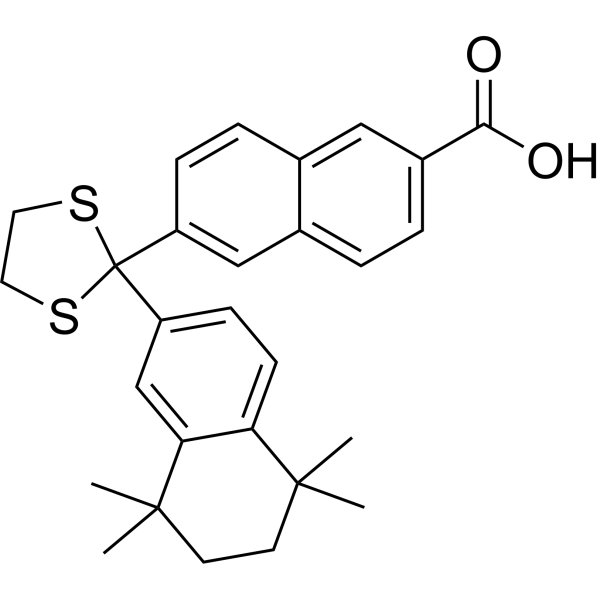
|
| DC49574 | SB-216 Featured |
SB-216 is a potent tubulin polymerization inhibitor. SB-216 shows strong antiproliferative potency in a panel of human cancer cell lines, including melanoma, lung cancer, and breast cancer. SB-216 can be used for cancer research.
More description
|

|
| DC67168 | YAP/TAZ inhibitor-2 Featured |
YAP/TAZ inhibitor-2 is a potent and orally active TEAD-YAP/TAZ inhibitor with an EC50 value of 3 nM. YAP/TAZ inhibitor-2 shows anti-proliferative activity. YAP/TAZ inhibitor-2 shows antitumor activity.
More description
|
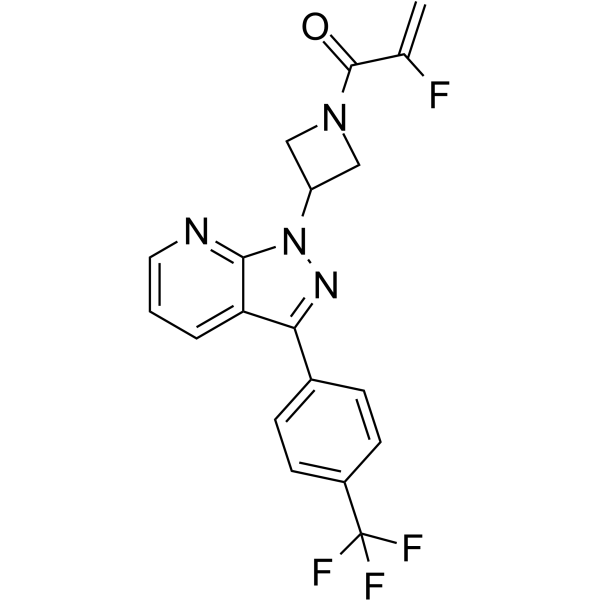
|
| DC67167 | Antifungal agent 35 Featured |
Antifungal agent 35 (compound 24) is a potent antifungal agent. Antifungal agent 35 is a potent enhancer of antifungal activity of Fluconazole against C. albicans.
More description
|
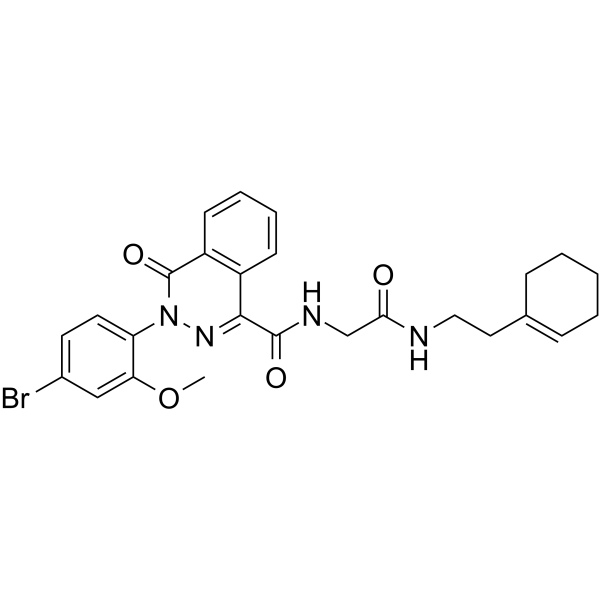
|
| DC67166 | 8-((1R,2R)-2-hydroxy-2-methylcyclopentyl)-2-((1-(methylsulfonyl)piperidin-4-yl)amino)pyrido[2,3-d]pyrimidin-7(8H)-one Featured |
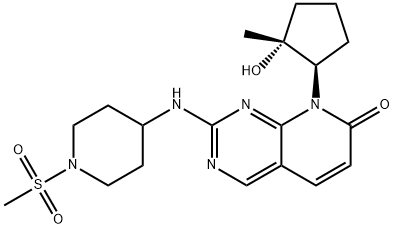
|
|
| DC67165 | Benzamide, 2-[(4-hydroxyphenyl)amino]-4-[4,5,6,7-tetrahydro-6,6-dimethyl-4-oxo-3-(trifluoromethyl)-1H-indazol-1-yl]- Featured |
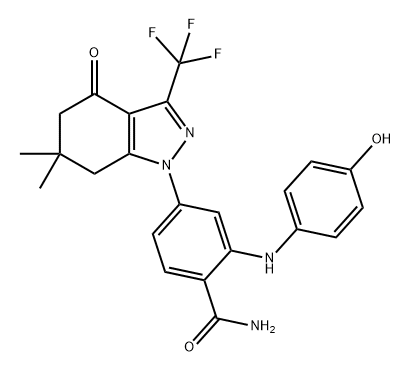
|
|
| DCX-025 | Sanguinarine Featured |
Sanguinarine (Sanguinarin), a benzophenanthridine alkaloid derived from the root of Sanguinaria Canadensis, can stimulate apoptosis via activating the production of reactive oxygen species (ROS). Sanguinarine-induced apoptosis is associated with the activation of JNK and NF-κB.
At equivalent molar concentrations, both the salt and free forms of a compound exhibit comparable biological activity. Nevertheless, the salt form (Sanguinarine chloride) usually boasts enhanced water solubility and stability.
More description
|
.gif)
|
| DC48216 | NLG802 Featured |
NLG802 is a prodrug of indoximod, an orally active indoleamine 2,3-dioxygenase (IDO) inhibitor.
More description
|

|
| DC48820 | hDHODH-IN-8 Featured |
hDHODH-IN-8 is a potent inhibitor of human dihydroorotate dehydrogenase (hDHODH) with an IC50 of 16 nM. hDHODH-IN-8 has potent antiproliferative activity and excellent aqueous solubility. hDHODH-IN-8 has the potential for the research of tumor disease, especially lymphoma.
More description
|

|
| DC48326 | ELOVL1-IN-3 Featured |
ELOVL1-IN-3 (Compound 22) is a potent and orally active inhibitor of elongation of very long chain fatty acid 1 (ELOVL1) enzyme. ELOVL1-IN-3 serves as a useful tool for researching adrenoleukodystrophy (ALD)[1].
More description
|
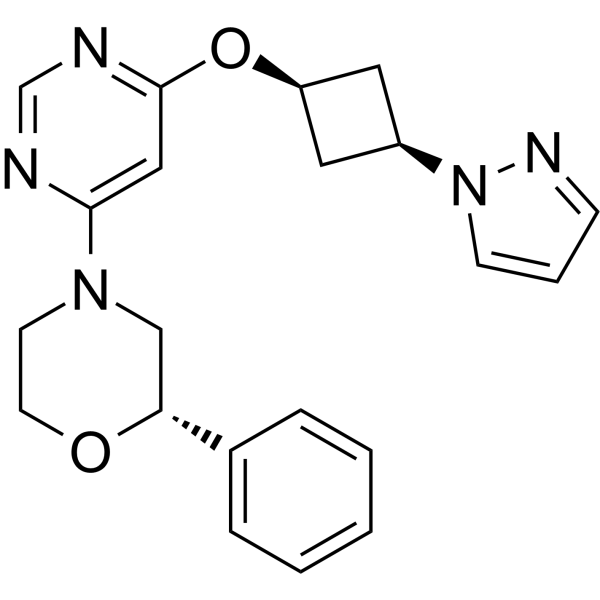
|
| DC28236 | PA452 Featured |
PA452, retinoic X receptor (RXR) specific antagonist, inhibits the effect of Retinoic acid (RA) on Th1/Th2 development.
More description
|

|
| DC46266 | PI3K-IN-20 Featured |
PI3K-IN-20 is a PI3k inhibitor extracted from WO2017101847 A1, compound 1.
More description
|
.gif)
|
| DC48999 | MAX-40279 hemifumarate Featured |
MAX-40279 hemifumarate is a dual and potent inhibitor of FLT3 kinase and FGFR kinase. MAX-40279 hemifumarate has the potential for the research of acute myelogenous leukemia (AML) (extracted from patent WO2021180032).
More description
|
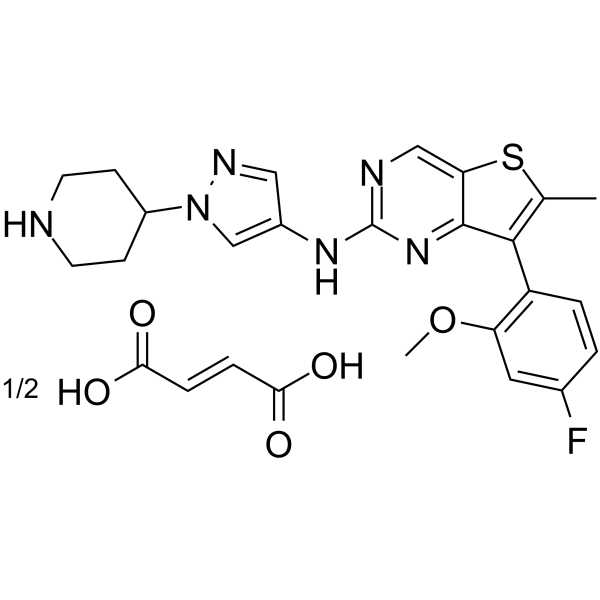
|
| DC49069 | MAX-40279 hemiadipate Featured |
MAX-40279 hemiadipate is a dual and potent inhibitor of FLT3 kinase and FGFR kinase. MAX-40279 hemiadipate has the potential for the research of acute myelogenous leukemia (AML) (extracted from patent WO2021180032).
More description
|
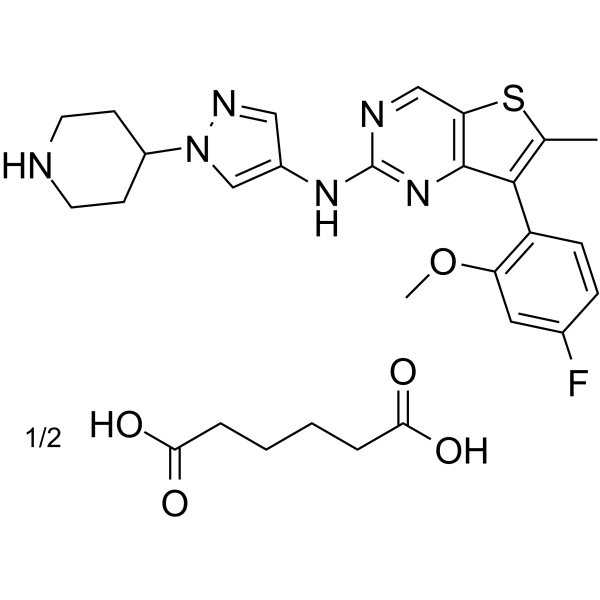
|
| DC67164 | WAY-204688 Featured |
WAY-204688 is an estrogen receptor (ER-α) selective, orally active inhibitor of NF-κB transcriptional activity with an IC50 of 122 ± 30 nM for NF-κB-luciferase (NF-κB-luc) in HAECT-1 cells.
More description
|
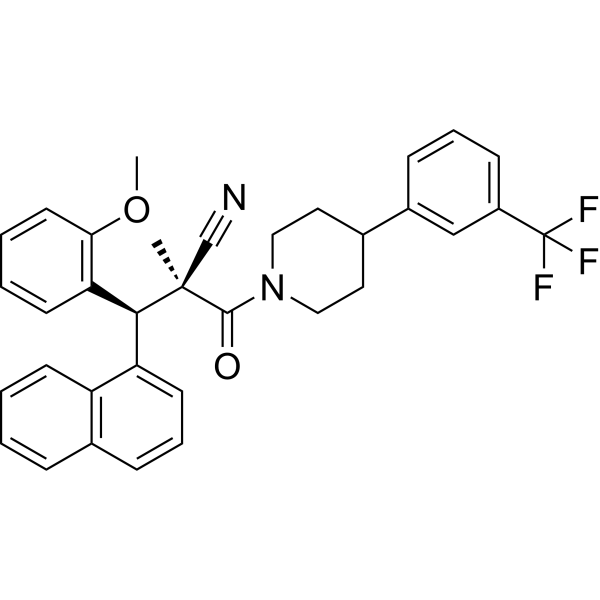
|
| DCC5054 | FPR Agonist 43 Featured |
FPR Agonist 43 (compound 43) is a dual formyl peptide receptor 1 (FPR1) and formyl peptide receptor 2 (FPR2)/ALX agonist.
More description
|
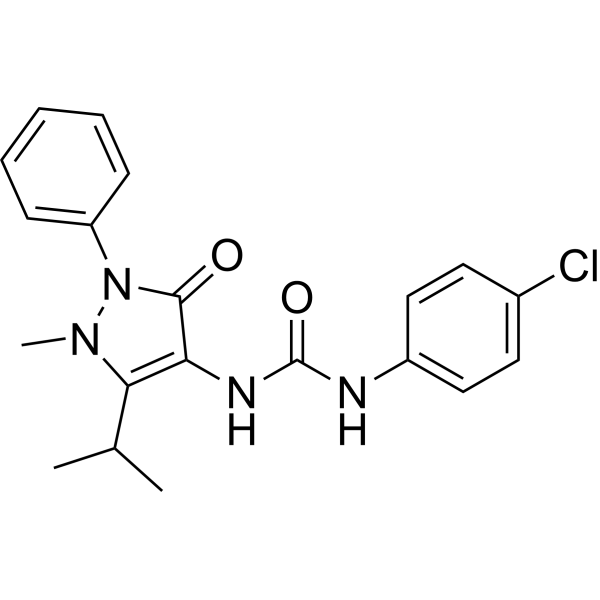
|
| DC48860 | MAX-40279 Featured |
MAX-40279 is a dual and potent inhibitor of FLT3 kinase and FGFR kinase. MAX-40279 has the potential for the research of acute myelogenous leukemia (AML) (extracted from patent WO2021180032).
More description
|
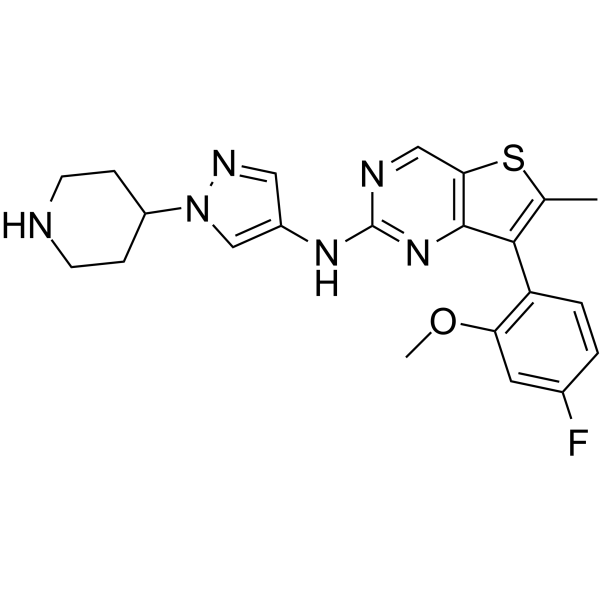
|
| DC71042 | Fenquizone Featured |
Fenquizone (MG-13054), a thiazide-like diuretic, exhibits chronic antihypertensive effect. Fenquizone can be used for the research of oedema and hypertension.
More description
|
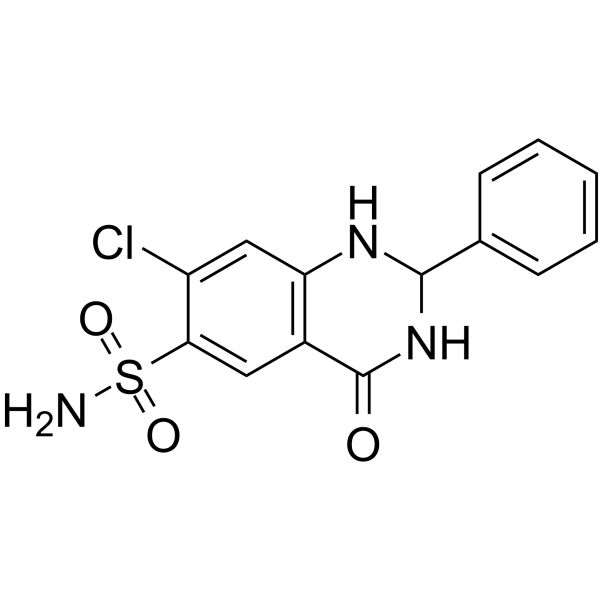
|
| DC45861 | CDK12-IN-2 Featured |
CDK12-IN-2 is a potent, selective and nanomolar CDK12 inhibitor (IC50=52 nM) with good physicochemical properties. CDK12-IN-2 is also a strong CDK13 inhibitor due to CDK13 is the closest homologue of CDK12. CDK12-IN-2 shows excellent kinase selectivity for CDK12 over CDK2, 9, 8, and 7. CDK12-IN-2 inhibits the phosphorylation of Ser2 in the C-terminal domain of RNA polymerase II. CDK12-IN-2 can be used an excellent chemical probe for functional studies of CDK12.
More description
|
.gif)
|
| DC48644 | Zacopride hydrochloride Featured |
Zacopride hydrochloride is a potent antagonist of 5-HT3 receptor with a Ki of 0.38 nM. Zacopride hydrochloride is also a agonist of 5-HT4 receptor with a Ki of 373 nM. Zacopride hydrochloride has anxiolytic activity. Zacopride hydrochloride has the potential for the research of Schizophrenia.
More description
|

|
| DC67163 | 1-Piperazinecarboxylic acid, 4-[6-(methoxycarbonyl)-3-pyridinyl]-, 1,1-dimethylethyl ester Featured |
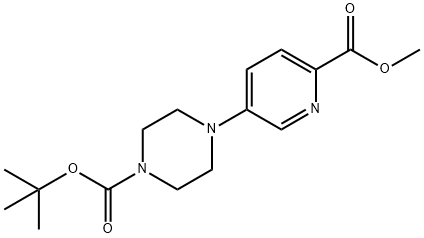
|
|
| DC9290 | Eliglustat(Genz-99067) Featured |
Eliglustat is a specific and potent inhibitor of glucosylceramide synthase.
More description
|
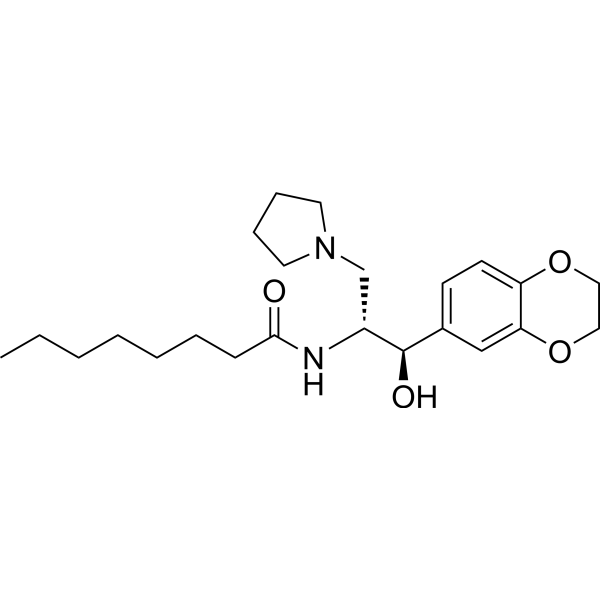
|
| DC67162 | (S)-GSK-3685032 Featured |
(S)-GSK-3685032 is the isomer of GSK-3685032 (HY-139664), and can be used as an experimental control. GSK-3685032 is a non-time-dependent, noncovalently, first-in-class reversible DNMT1-selective inhibitor, with an IC50 of 0.036 μM. GSK-3685032 induces robust loss of DNA methylation, transcriptional activation, and cancer cell growth inhibition.
More description
|
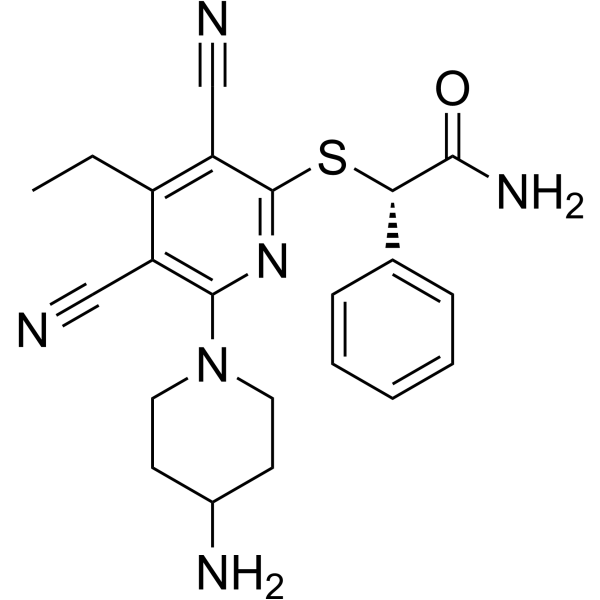
|
| DC47231 | Dup-721 Featured |
DuP-721 is a broad spectrum and orally active antibacterial agent against a variety of clinically susceptible and resistant bacteria, especially M. tuberculosis.
More description
|
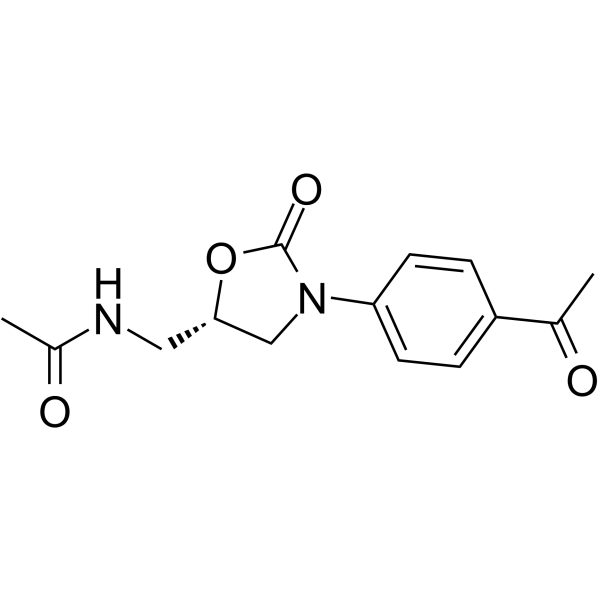
|
| DC34649 | NCGC00029283 Featured |
NCGC00029283 is a werner syndrome helicase-nuclease (WRN) helicase inhibitor with IC50s of 2.3 μM, 12.5 μM, and 3.4 μM for WRN, BLM and FANCJ helicase, respectively.
More description
|
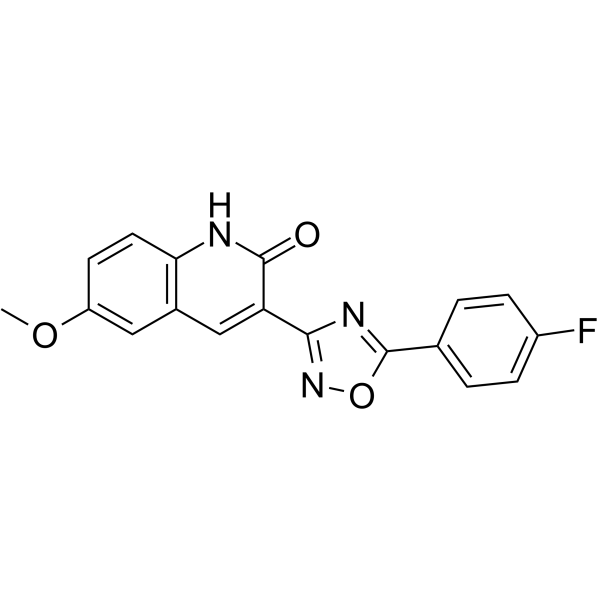
|
| DC71605 | GSK-1520489A Featured |
GSK-1520489A(EX-A5430) is an active Protein Kinase, Membrane Associated Tyrosine/Threonine 1 (PKMYT1) inhibitor.
More description
|
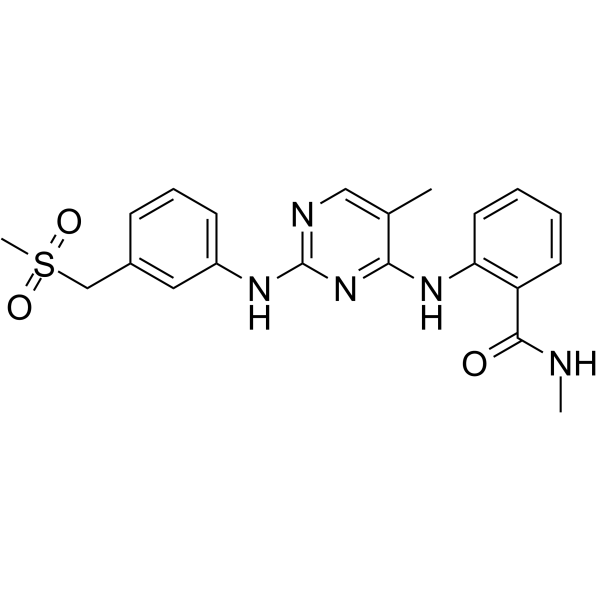
|
| DC73073 | SB27012 Featured |
SB27012 (SB 27012) is a small molecule PPI inhibitor of the Spike RBD-ACE2 interaction (IC50=7.7 uM in ELISA assays), binds ACE2 (Kd=210 nM) without affecting ACE2 enzymatic activity.
More description
|

|
| DC72888 | Z0933M Featured |
Z0933M is a potent S phase kinase-associated protein 1 (Skp1) inhibitor with Kd of 54 nM, potently inhibits Skp1-F-box protein-protein interactions with Ki value of 231 nM in FP-based in vitro competition assays.
More description
|

|
| DC60704 | 158H9 Featured |
158H9 is a potent and effective Pin1 degrader with IC50 of 21.4 nM in DELFIA displacement assay with significantly improved properties over the parent molecule BJP-07-017-3.
More description
|
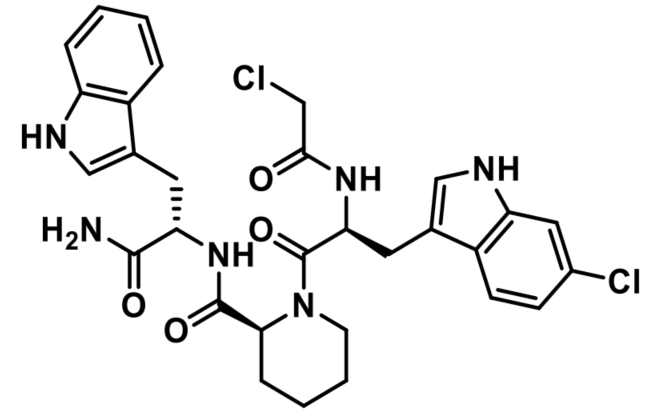
|